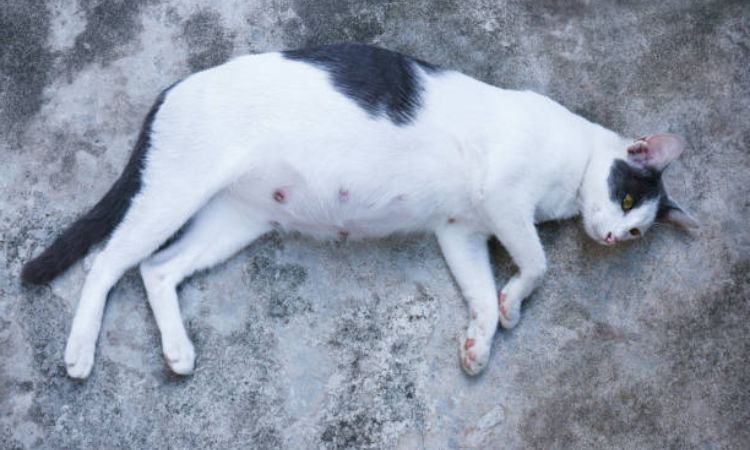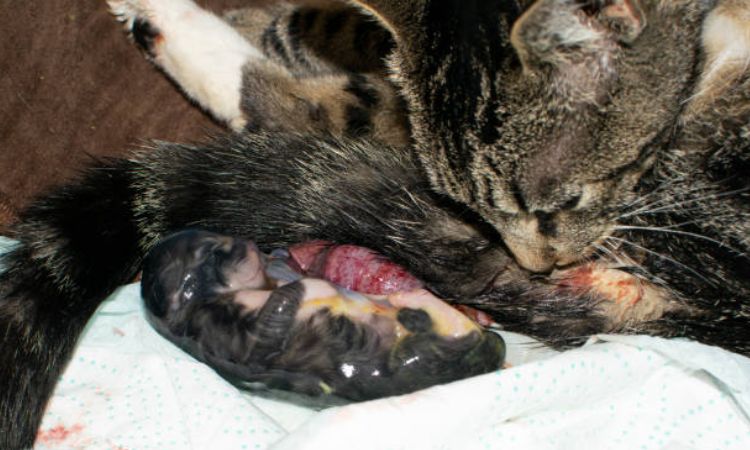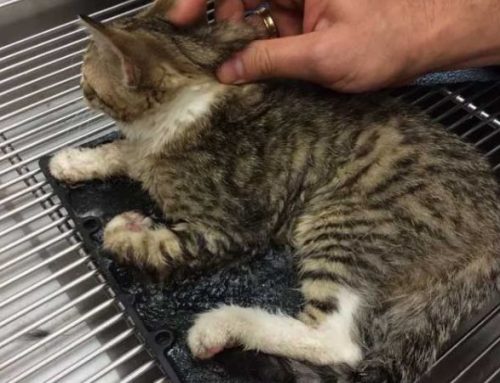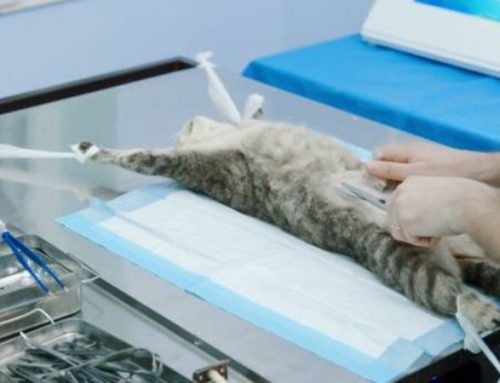There’s nothing quite like the anticipation of welcoming a litter of kittens, especially when your cat is nearing the end of her pregnancy. Whether you’re a first-time pet parent or have been through this journey before, knowing the signs that your cat is going into labor can help you stay calm, prepared, and ready to support her.
In this guide from Nexus-Pets, we’ll walk you through what to expect as your cat approaches delivery, so you can ensure a safe and stress-free birth for both mother and kittens.

Understanding Cat Labor
What Is Cat Labor?
Cat labor, also known as “queening,” is the process through which a pregnant female cat gives birth to her kittens. It typically occurs between 63 to 65 days after conception. This process involves a series of physiological changes as the cat’s body prepares for and completes delivery. Labor can take several hours and varies in length based on factors such as the cat’s health, age, and the number of kittens.
Key Points:
- Also known as “queening”
- Occurs around day 63–65 of pregnancy
- Involves physical and behavioral changes
- Can last several hours to more than a day
Stages of Cat Labor Explained
Cat labor unfolds in three distinct stages: early labor, active labor, and afterbirth. Each stage has specific signs that signal what’s happening in your cat’s body. Understanding these stages will help you know what’s normal and when veterinary help might be needed.
Stage 1: Early Labor (Nesting and Restlessness)
During early labor, your cat may begin showing signs that birth is near. She may seem restless or anxious and will start searching for a quiet, safe spot to deliver her kittens. This stage is when the cervix begins to dilate, and mild uterine contractions start.
What to Expect:
- Duration: 12–24 hours
- Restlessness, pacing, or hiding
- Excessive grooming (especially around her vulva and belly)
- Nesting behavior – searching for or settling into a quiet area
- Decreased appetite or refusal to eat
- Possible vocalizing or increased affection/clinginess
- Body temperature may drop below 100°F (37.8°C)
Stage 2: Active Labor (Contractions and Delivery)
In this stage, the cat begins visible contractions, and kittens are delivered one by one. Each kitten is usually born in its own amniotic sac, which the mother will instinctively break open. Delivery may seem intense, but the cat typically manages it on her own without assistance.
What to Expect:
- Visible, strong abdominal contractions
- Straining to push, accompanied by vocalizations
- Vaginal discharge (clear or pinkish-red is normal)
- First kitten usually appears within 30–60 minutes of strong contractions
- Each subsequent kitten is born within 10 to 60 minutes
- If more than 2 hours pass between kittens, consult a veterinarian
- Mother may lick each kitten to stimulate breathing and clean them
Stage 3: Afterbirth and Recovery
Once a kitten is delivered, the placenta (afterbirth) follows. The mother will typically eat the placenta, which is normal and provides nutrients. It’s crucial that all placentas are expelled—a retained placenta can lead to infection. After the kittens are born, the mother enters a recovery phase where she begins nursing and caring for her litter.
What to Expect:
- A placenta is delivered after each kitten (typically within 15 minutes)
- The mother may eat the placenta — a natural behavior
- Kittens start nursing soon after birth
- The mother continues grooming and bonding with kittens
- Monitor that the number of placentas matches the number of kittens
- Watch for signs of distress, foul-smelling discharge, or excessive bleeding

Common Signs Your Cat is About to Give Birth
Physical Signs
These are the most observable indicators that your cat’s body is preparing for labor.
1. Nesting Behavior and Restlessness
- Your cat may begin searching for a quiet, safe space to give birth.
- She might scratch at bedding, rearrange soft items, or settle into hidden corners.
- Increased pacing, circling, and general discomfort can be observed.
2. Decreased Appetite
- In the final 24–48 hours before labor, many cats lose interest in food.
- This change in appetite is a natural response to hormonal shifts and physical discomfort.
3. Drop in Body Temperature
- A healthy cat’s normal temperature is between 100.5°F and 102.5°F (38°C–39.2°C).
- A sudden drop to around 99°F (37.2°C) typically occurs 12–24 hours before labor begins.
- You can monitor this with a rectal thermometer if needed.
4. Vaginal Discharge
- A clear, pinkish, or slightly bloody discharge may appear just before or during labor.
- This signals that the cervix is dilating and the body is preparing for delivery.
5. Visible Contractions or Abdominal Tightening
- You may see her abdomen tense rhythmically—these are uterine contractions.
- Contractions may initially be spaced far apart but will increase in intensity and frequency.
6. Changes in Breathing Pattern
- Your cat may begin to breathe more rapidly or pant, especially as contractions intensify.
- Labored or shallow breathing may occur as labor progresses.
Behavioral Signs
These changes reflect how your cat emotionally and instinctively responds to the upcoming birth.
1. Increased Vocalization
- Your cat may become more vocal, meowing or yowling as labor approaches.
- These sounds often reflect anxiety, discomfort, or an attempt to communicate.
2. Seeking Solitude or Attention
- Some cats isolate themselves, hiding under furniture or in closets.
- Others may become unusually clingy, following their owner around and seeking reassurance.
3. Grooming More Frequently
- Excessive grooming, particularly around the genital area, helps keep the birth canal clean.
- This also indicates that her body is preparing for delivery.
4. Pacing or Hiding
- Restlessness, pacing, and frequently changing locations are common in early labor.
- Hiding behavior is instinctive, as the cat looks for a quiet, secure birthing spot.

What to Expect During Labor
When your cat goes into labor, it’s important to understand what’s normal and when you might need to step in. Labor typically occurs in three phases, and each has distinct signs and timing. Staying calm and observant will help ensure a smooth birthing process.
Duration of Labor Phases
Labor can last anywhere from a few hours to over a day, depending on the cat and number of kittens.
- Stage 1 (Early labor): 6–12 hours; may include nesting, restlessness, and pacing.
- Stage 2 (Active labor): Each kitten is usually born 15–60 minutes apart.
- Stage 3 (Afterbirth): Each placenta follows the kitten or comes out shortly after.
Recognizing Active Contractions
Once your cat enters active labor, contractions become visible and rhythmic.
- Abdominal tightening and straining
- Cat may vocalize or appear focused
- Frequent licking of the genital area
Delivery of Kittens: What’s Normal?
Kittens are delivered one at a time, each ideally followed by its placenta.
- Most cats give birth lying down or crouched
- Kittens may be born head or tail first—both are normal
- The mother will bite open the sac, clean the kitten, and sever the umbilical cord
Monitoring for Distress or Complications
Keep a close eye on your cat throughout labor. Seek veterinary help if:
- No kitten appears after 1 hour of strong contractions
- Green or foul-smelling discharge is present without a kitten
- More than 2 hours pass between kittens
- The cat seems exhausted or unresponsive
Understanding the signs of labor in your feline queen is crucial for a smooth birthing process. By recognizing these key indicators, you’re better prepared to support your cat and welcome her litter of kittens, making this natural journey a positive experience for all.






